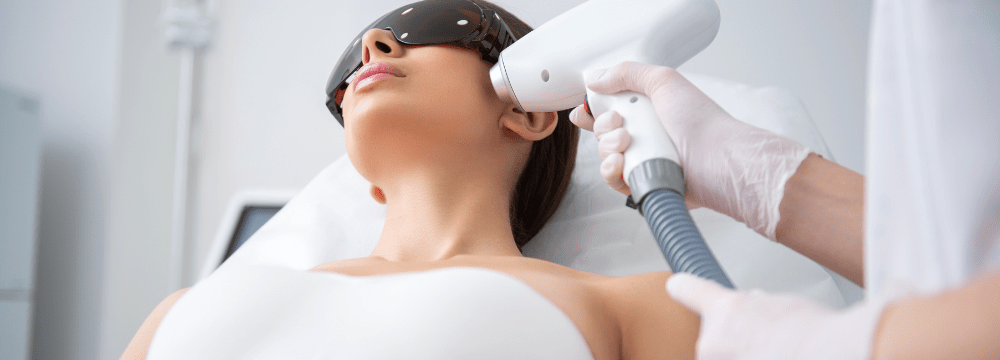Am I Missing Out on The Power of Lasers in My Skincare Routine?

You can’t turn to an online blog, fashion magazine, or social media feed without coming across incredible images and testimonials about the power of skincare lasers. And while the research and results seem impressive, the overwhelming amount of information is often not. How do we sort through all this information, weighing each laser, their effects, and which skin types they benefit from? And, importantly, when and where you should consider doing it?
Let’s talk about these advances and where we are in this significant new era of dermatological technology.
First, it’s important to note that when our skin absorbs excess UV radiation, mutations occur. Some of those mutations are benign, while some are malignant. We can treat many of these harmless mutations with light and laser therapies. However, it’s essential to have a dermatologist examine any lesion being considered for laser therapy. Why? If the lesion in question is not benign, using lasers could complicate diagnosis and treatment down the line.
What Treatment Options Are Available for Benign Lesions?
We have more lasers on the market than ever, and many can safely treat various problems. We will often begin cosmetic treatments before the visible signs of UV damage are evident. This could include topical therapies, light/energy-based treatments, or laser therapy when appropriate. Using amazing photographic technology, even newer imaging technologies can show early, underlying signs of sun damage, especially on the face. This means we can now detect UV damage that we could never see before.
Usually, sun damage appears in the form of hyperpigmentation, causing brown discoloration that may be cosmetically troublesome. There are different forms of hyperpigmentation and various causes of it. Lentigos or solar lentigines often form on the face, as do other pigmentary disorders, including melasma. Melasma may be hormonally influenced, but sun damage makes pigmentary conditions or dyschromia appear more pronounced. Pigmented cells are located at different skin levels, so it’s critical to have a dermatologist determine which laser is most appropriate for your specific condition. Not only can a dermatologist determine which laser is most effective, but they can also select a laser that is safe for your skin color. Not all skin colors respond to laser therapy in the same way, and darker skin types are at higher risk for unwanted side effects, including post-procedural hyperpigmentation and hypopigmentation.
The two main types of light-based therapy used in cosmetic dermatology for sun damage are intense pulsed light or IPL; or accurate lasers, which are monochromatic – each has different targeted wavelengths and safety profiles.
Intense Pulsed Light or IPL Therapy
IPL is considered a relatively safe treatment for dyschromia, though there have been infrequent reports of hypopigmentation and scarring. These side effects can typically be avoided with settings selection on the device, further highlighting the need for well-trained dermatology professionals to perform the treatments. IPL is a very effective method for skin lightening and has been used since the mid-1990s.
There are many on the market when it comes to lasers for targeting early signs of sun damage and aging. They can be classified into colors, with green, red, and near-infrared lasers having different depth penetration and preferred uses. Green light lasers include the popular pulsed dye laser (PDL) and the Nd: YAG (532nm). These are useful for both pigmentation and vascular involvement. Red light has a longer wavelength and can penetrate the skin more deeply. These lasers include Ruby and Alexandrite and are also effective at treating pigmentary conditions. Near-infrared Nd: YAG is an even longer wavelength that penetrates the skin to the dermal level. This type of laser might be safer for darker skin types. Active research is ongoing to confirm this, and new developments are continuously happening in the field.
Whatever your unique skin needs, the first step is always to visit a dermatologist and get a better understanding of the health of your skin. Once that’s determined, your physician will walk you through the most appropriate options and care. Lasers are almost magical in many ways – with the results being head and shoulders ahead of the skincare of just a few years ago. But with these advances comes the need for vigilant post-laser care, dedicated daily sunscreen, and staying mindful about sun exposure.
Lasers may produce amazing results, but do not erase past lifestyle choices. Without proper care, skin can be damaged once again. Investing time and expense in laser therapies is a commitment that will yield the skin you want and hopefully offers the jumpstart to develop the skincare plan to protect yourself moving forward.
